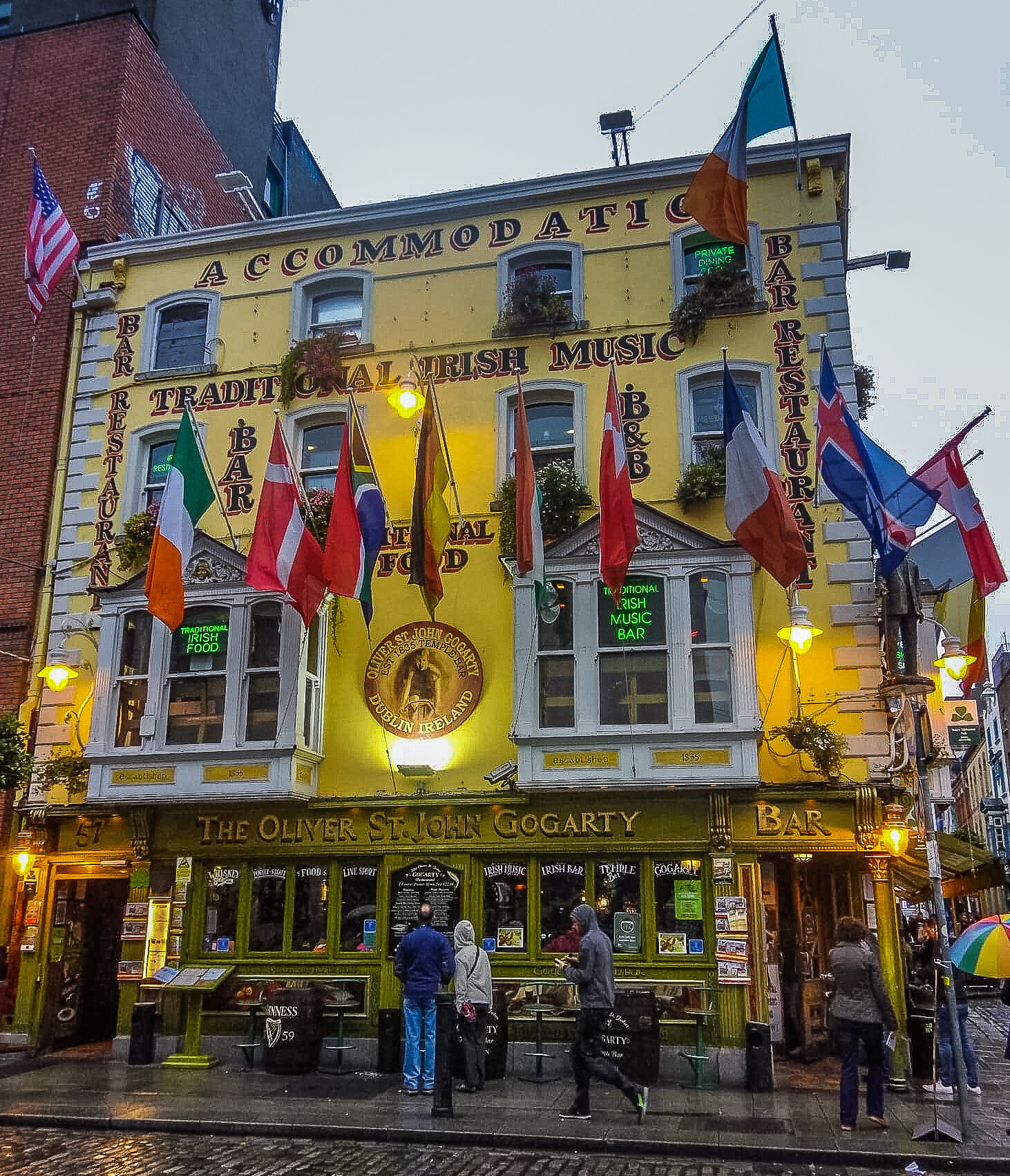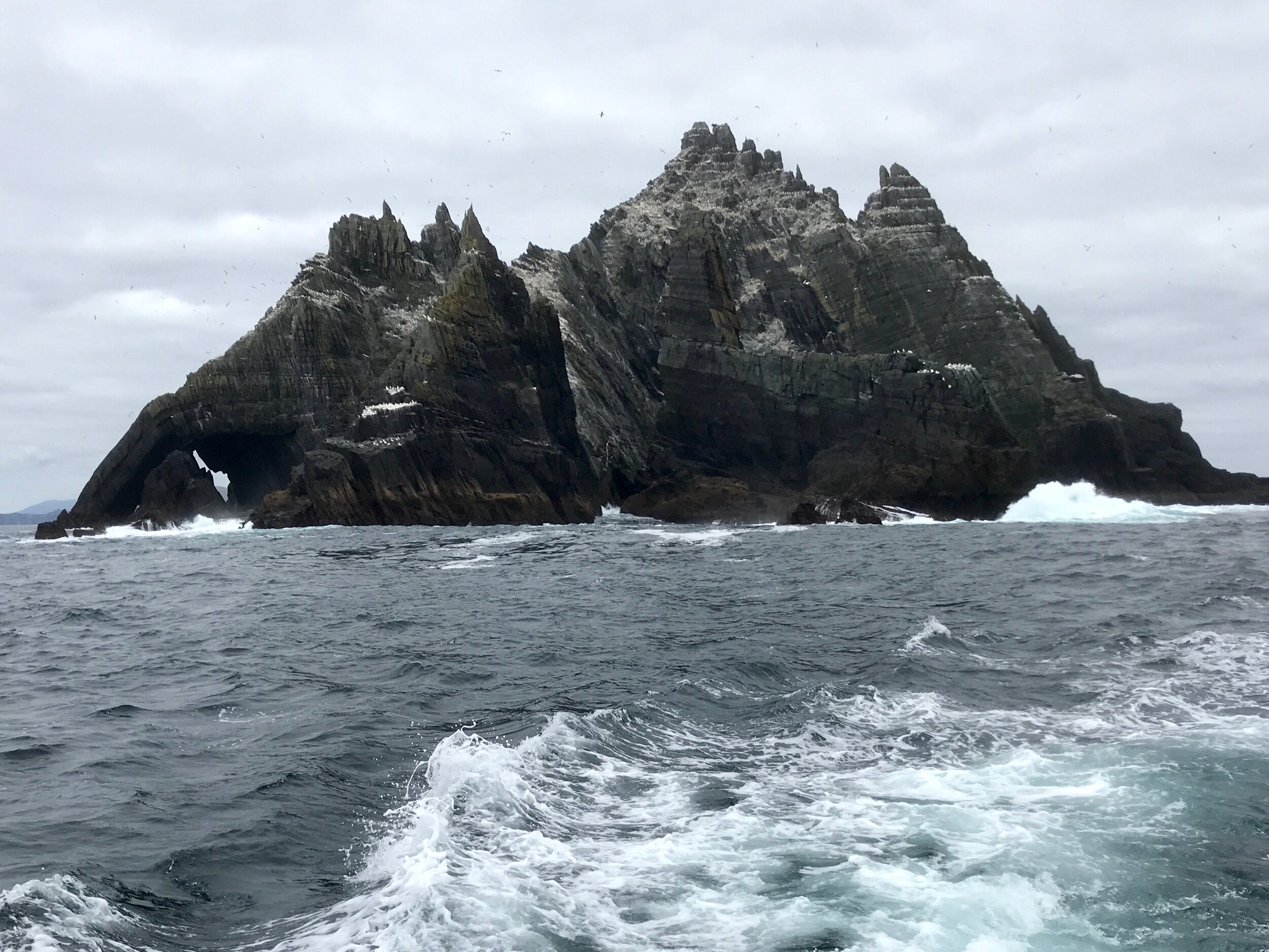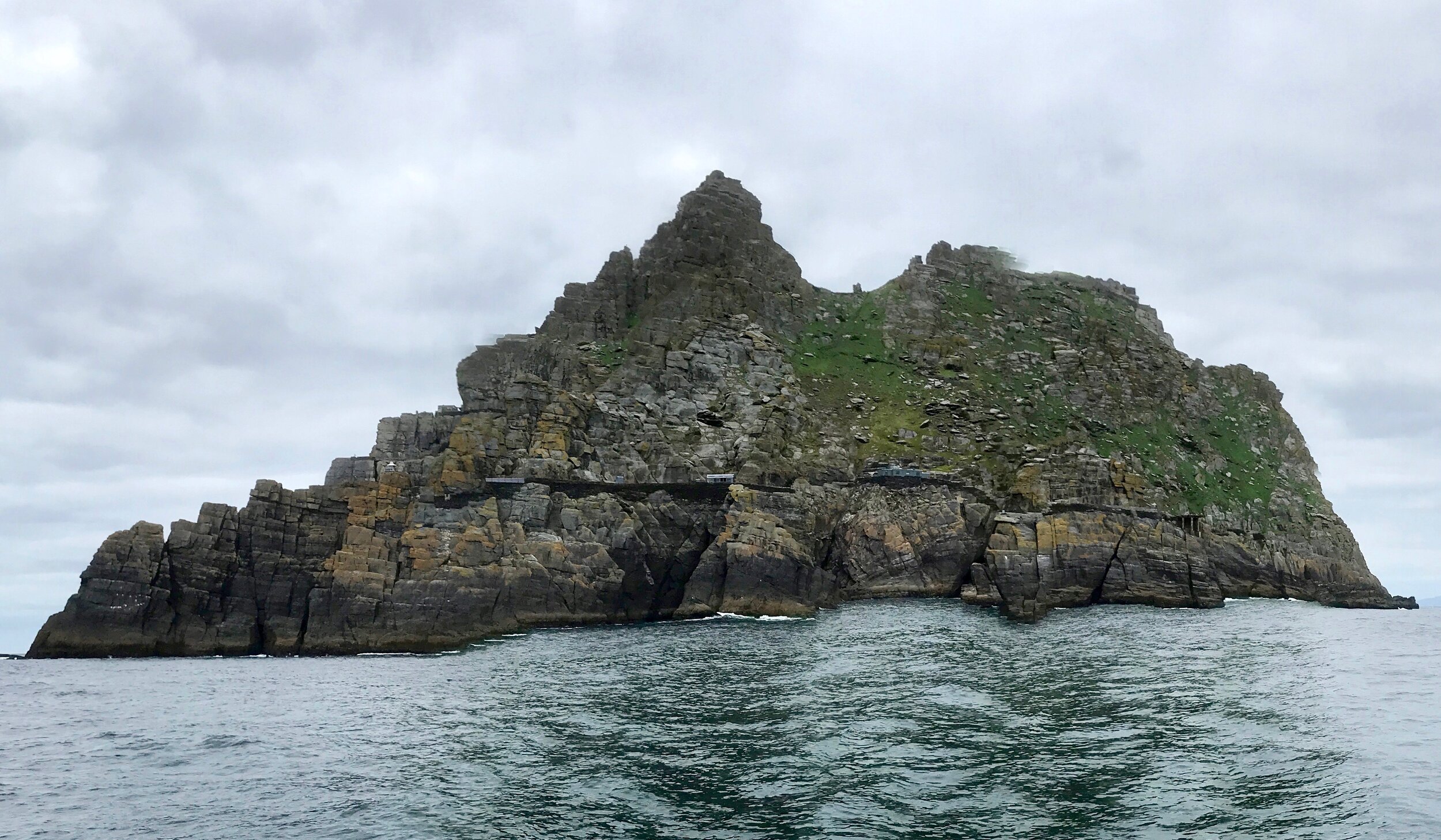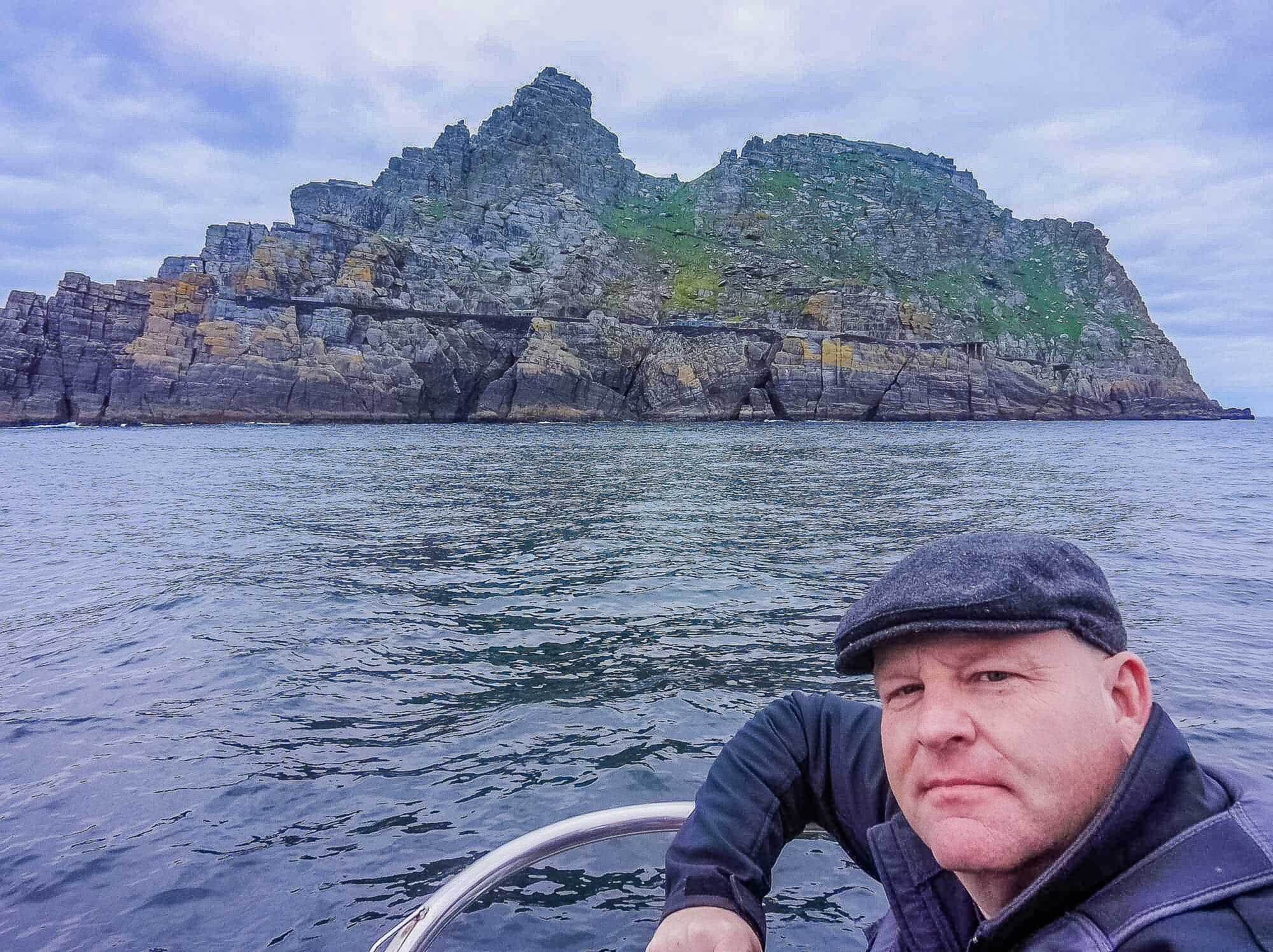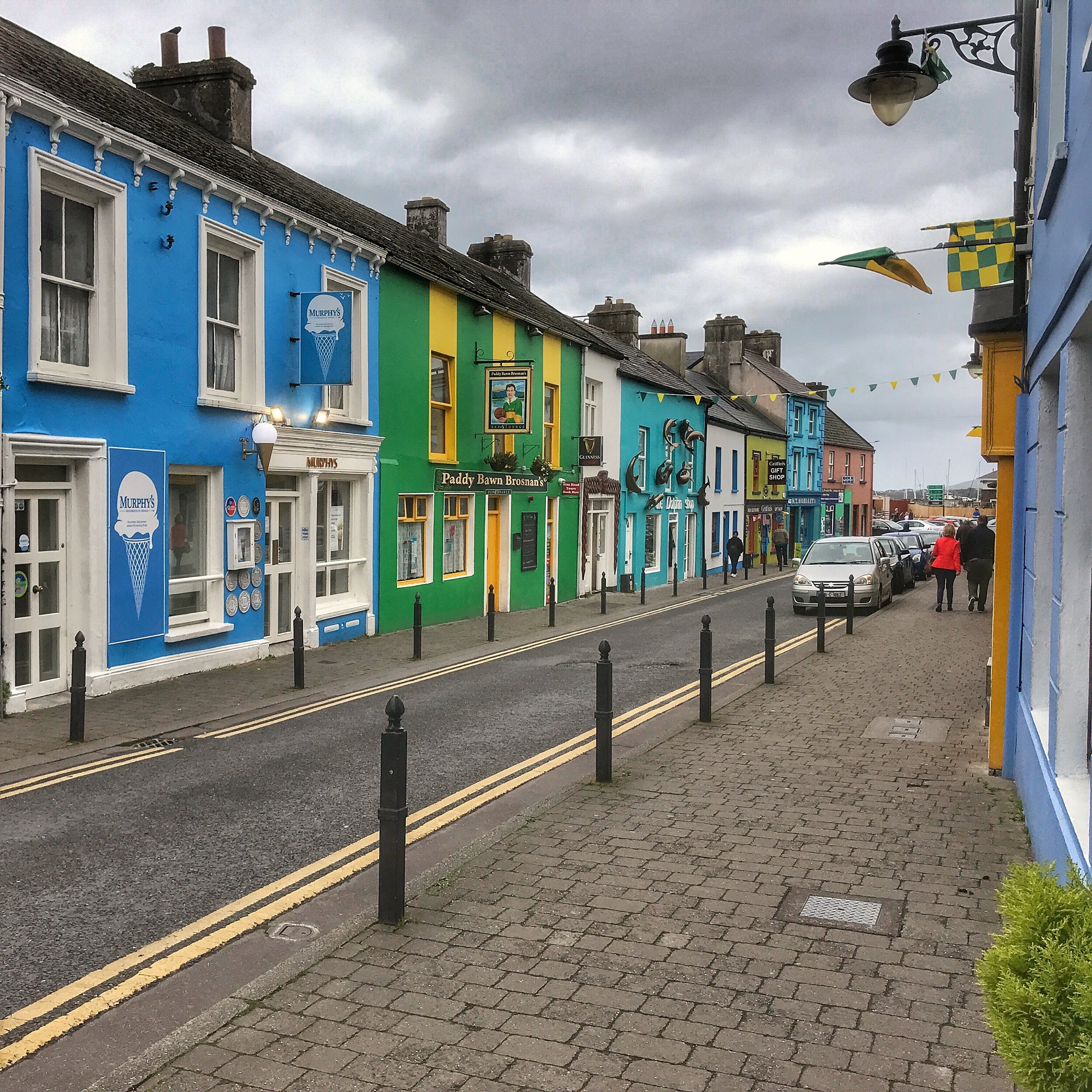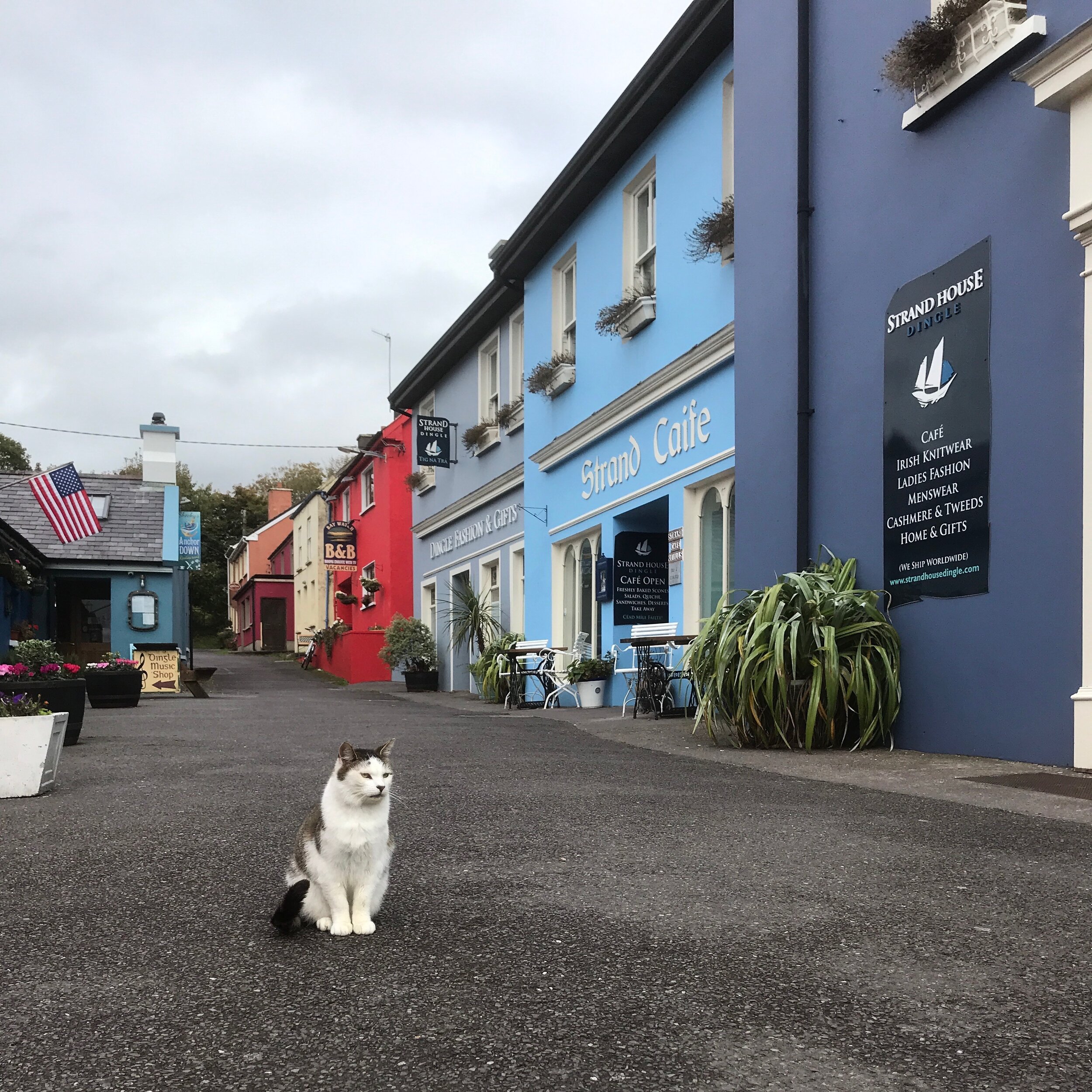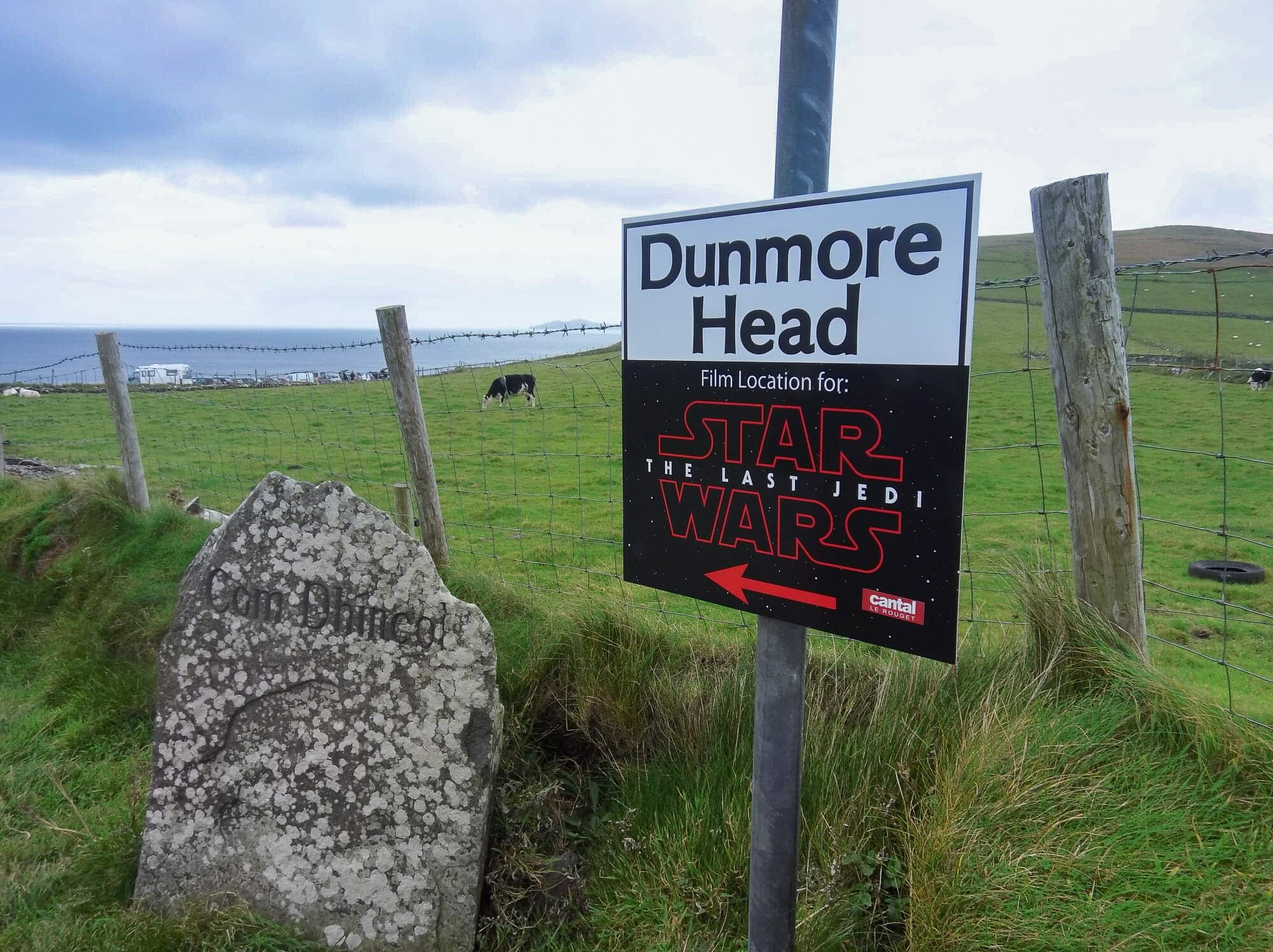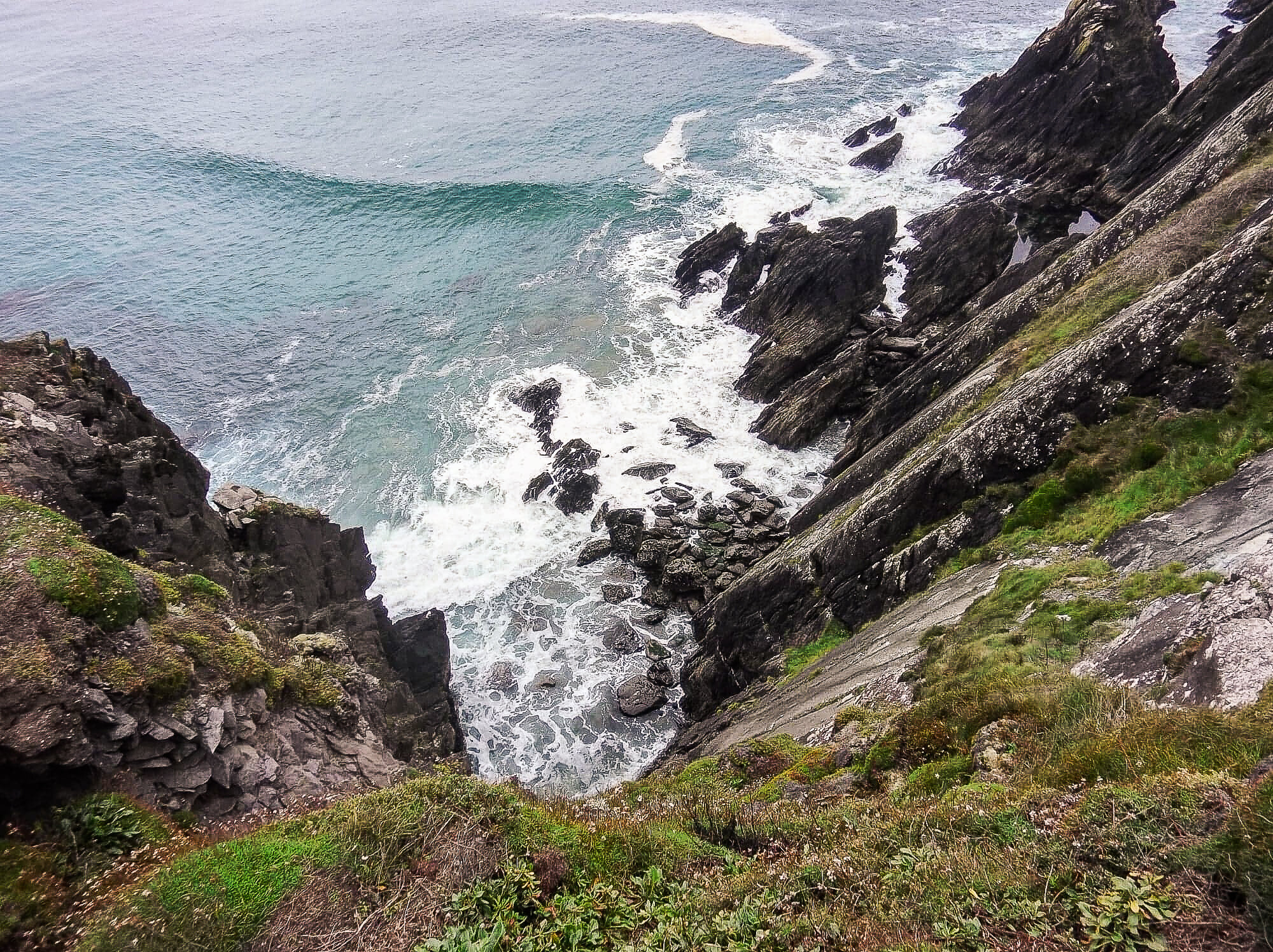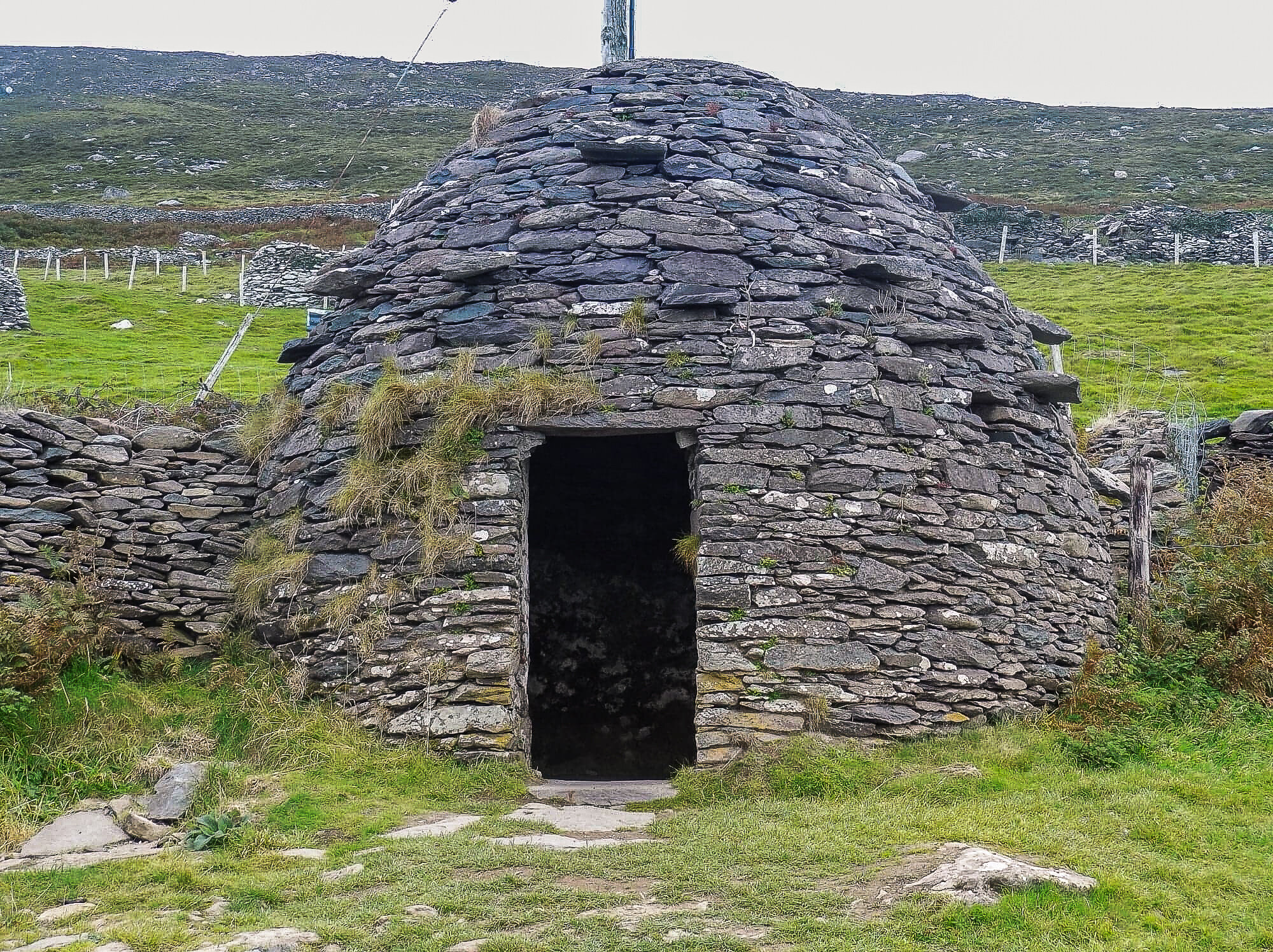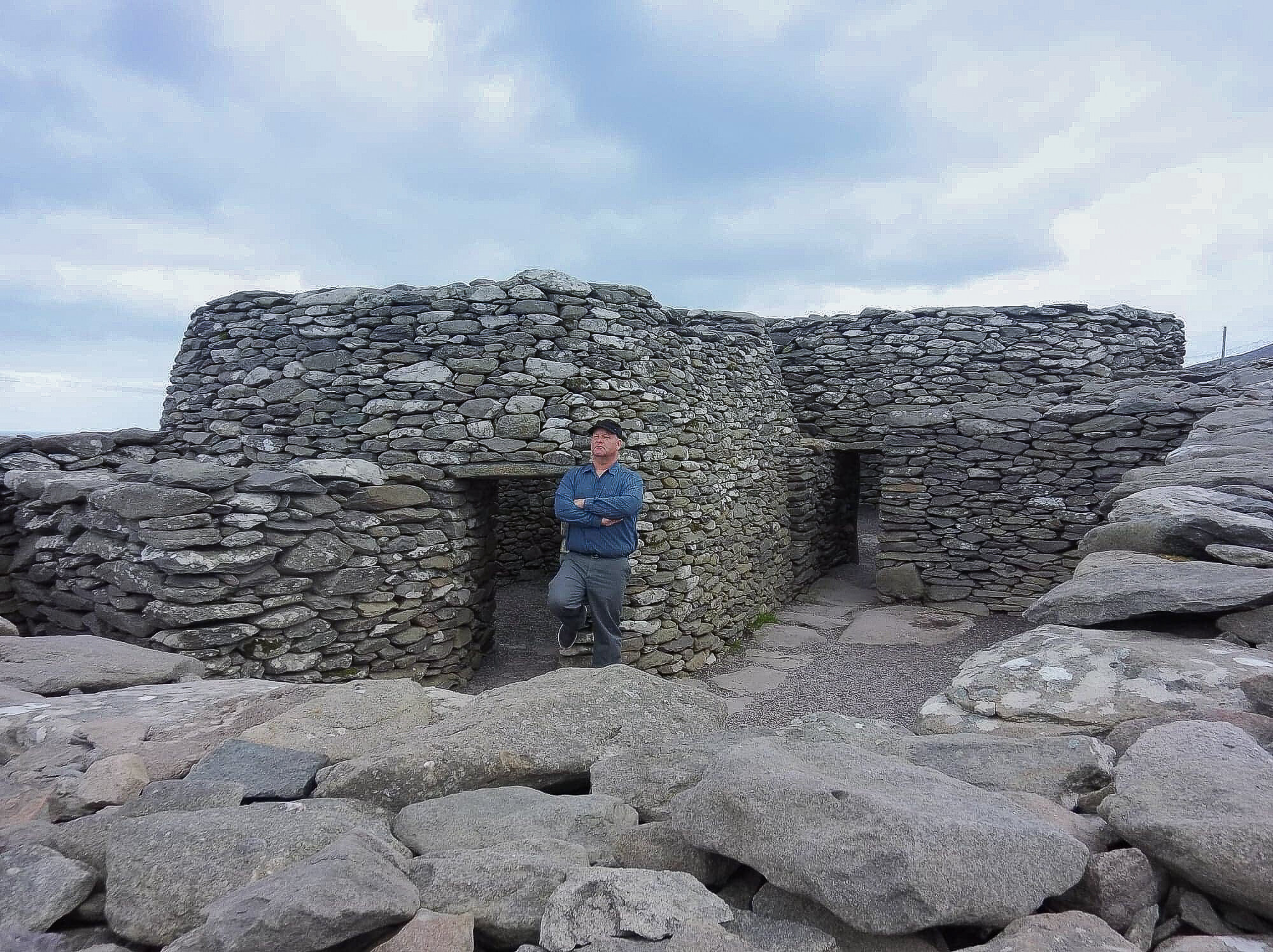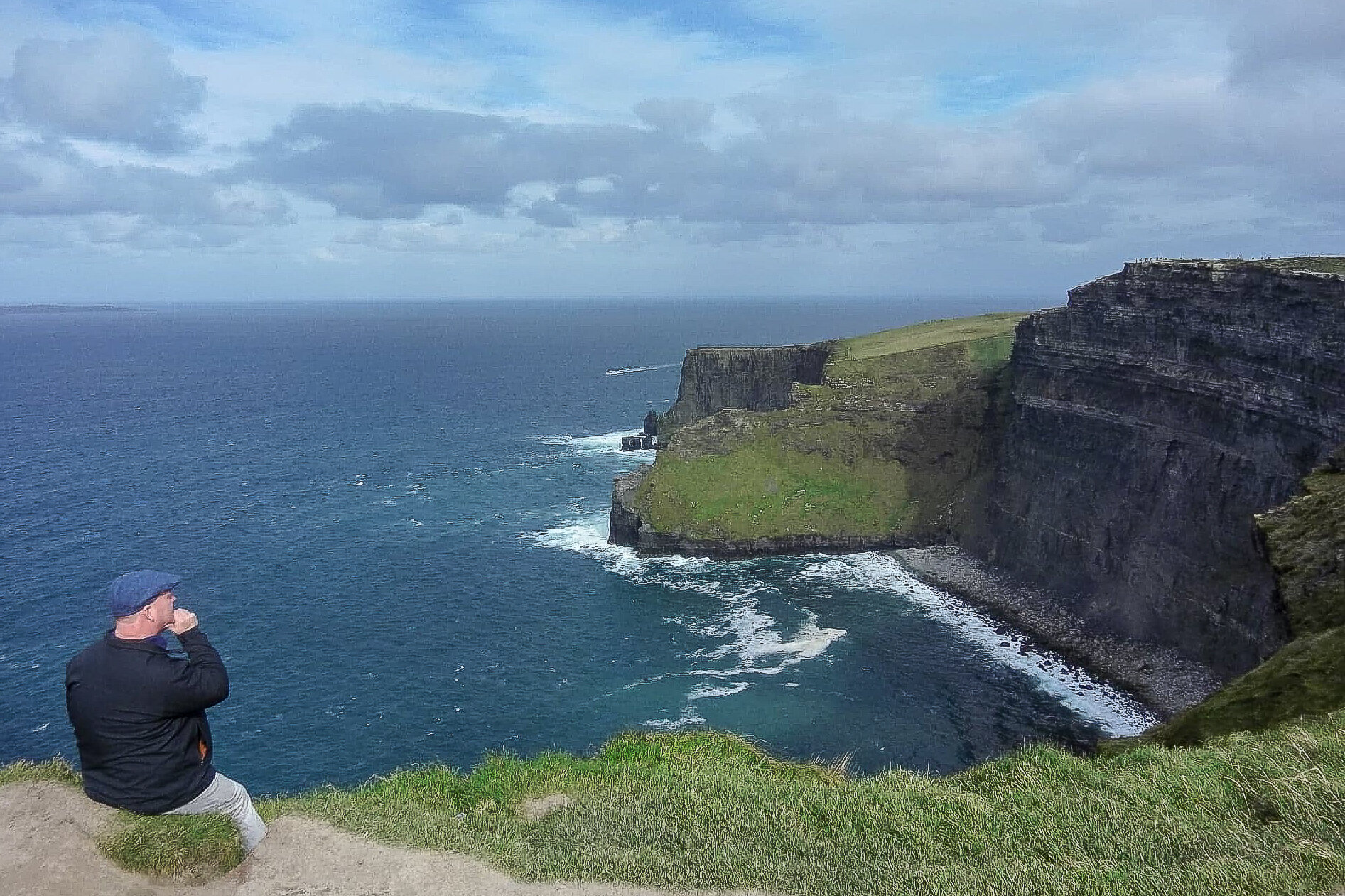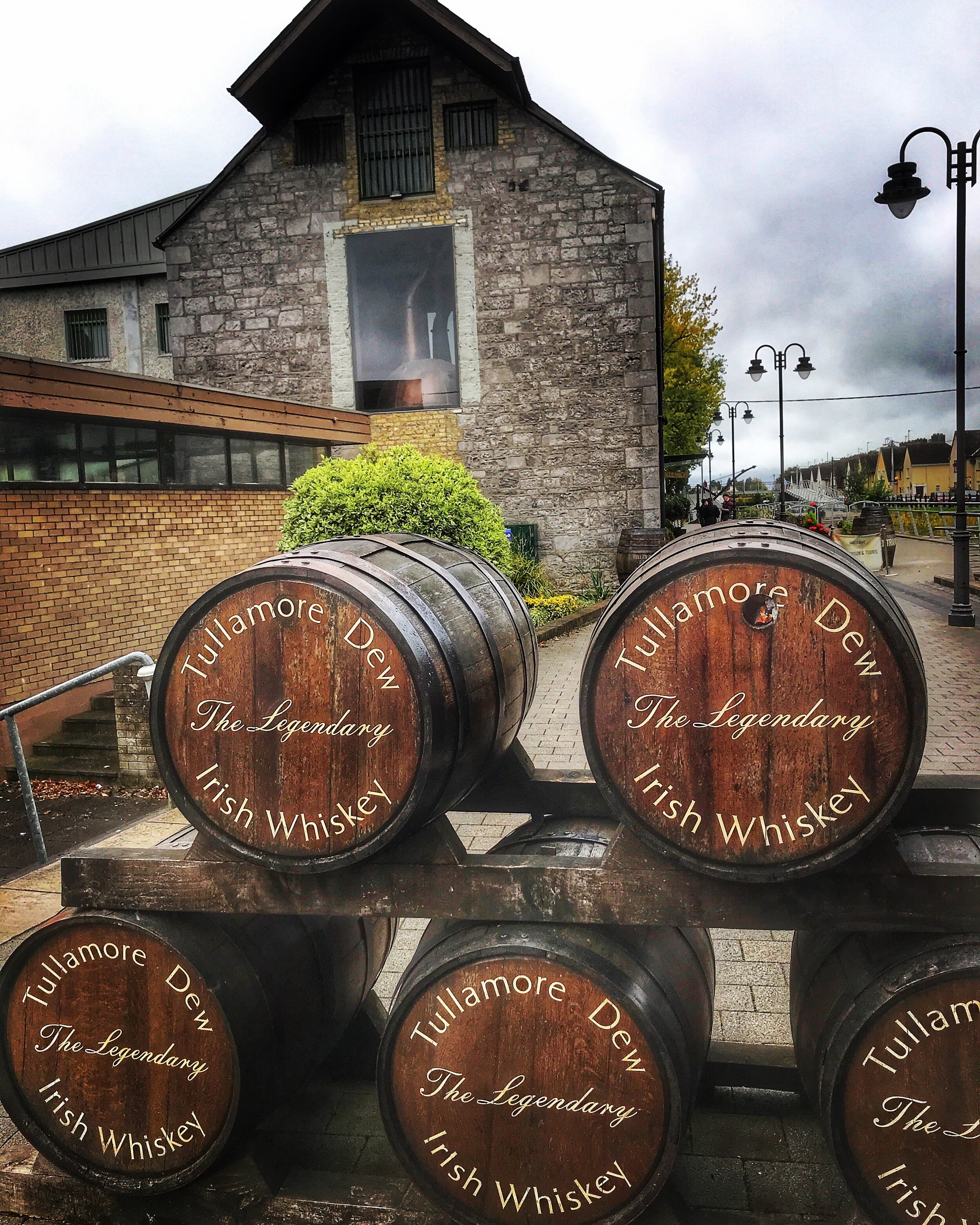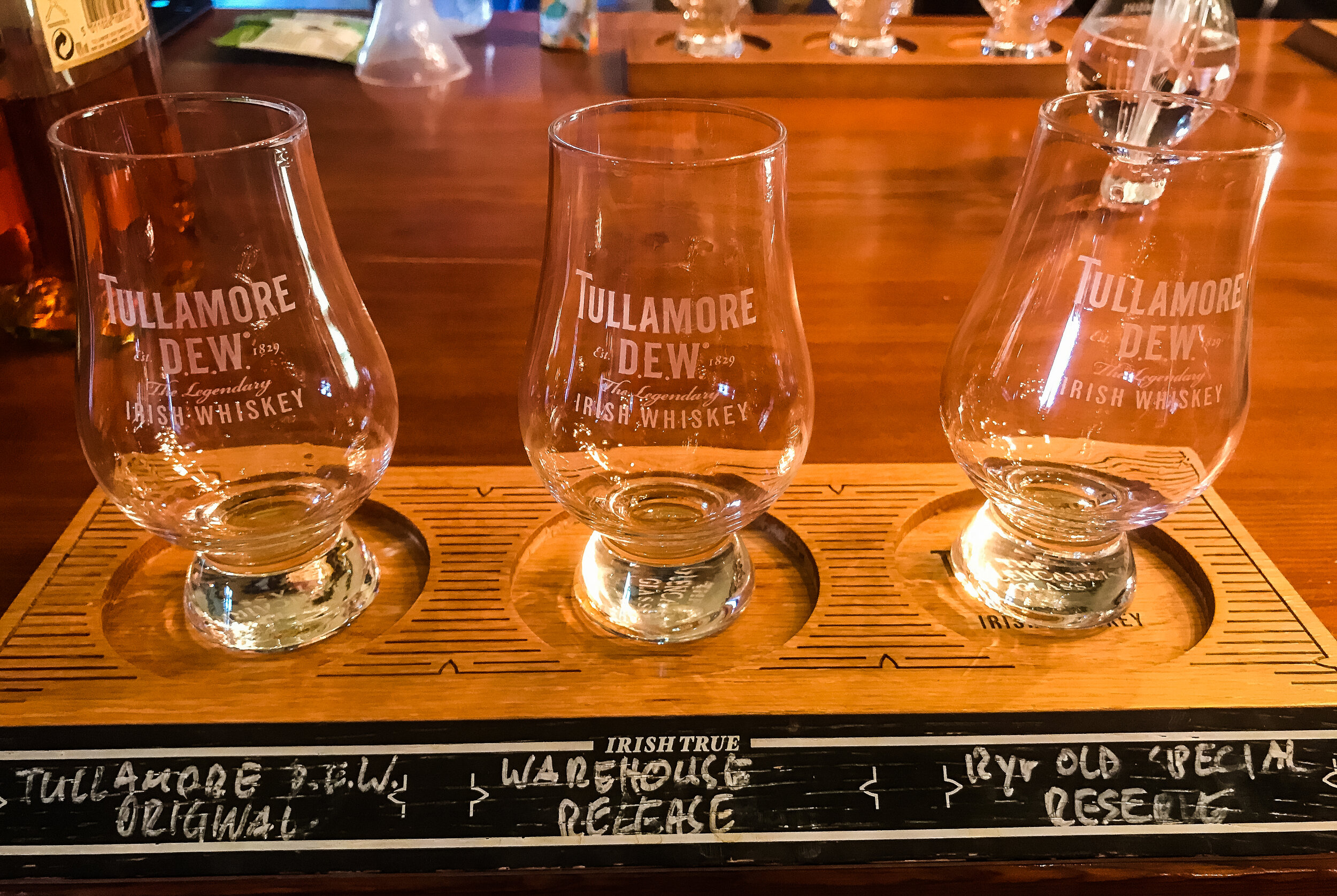Ireland
Last Sunday was like any other Sunday for the BaconMedic. With it being my only day to sleep in, I did so like a professional and woke up at the late hour of 730 am, a far cry from my usual 430 am start. I had plans to start my day with breakfast at Parker’s Maple Barn in tiny little Mason, New Hampshire, followed by the ultimate New England fall activity, apple picking. But before I could hit the road, Neville, the BaconPug, needed to be let out so he could do his morning business. When I opened the door to the outside, I was hit with something I knew would eventually arrive but mentally wasn’t ready for yet: a blast of cold air. A quick look at my phone confirmed the worst: 42 degrees. Summer was officially over, and as Jon Snow would ominously say, “Winter is Coming”.
As much as my sore back dreads the cold, I did what any other hearty New Englander does. I moaned for a few minutes, promising myself yet again that this will be my last New England winter, all the while rummaging through my closet for my wardrobe du jour. Of course, since Sunday is game day, my Patriots hoodie would have been my usual choice, but hanging there, right in front of me, was my forest green Aran Irish wool sweater. Perfect!
I bought this sweater along with two others during my trip to Ireland a year ago. Wearing it on this cold New England Fall day not only kept me warm, but it brought back some amazing memories of my previous journeys to Ireland. I’ve been to Ireland twice—my first experience was a quick trip to Dublin in 2017 with my youngest daughter Emily, followed by a return trip last year where I spent a week driving around the countryside with fellow blogger and great friend Stacy (she contributed some pictures to this blog-she’s on instagram as @mybacktothewind). The memories that sweater brought back were amazing and plentiful.
Local Pub in the Temple Bar Area of Dublin courtesy of @mybacktothewind
When planning a trip to the Emerald Island, one of the first things you may think about is visiting one (or several) of the many pubs. While this is certainly a great past time, there is so much more to do in Ireland than drink – shocking, considering a portion of this blog will be dedicated to Irish alcohol production. Definitely, spend some nights in the local pubs, but make sure that you get out of the city and do some exploring. What should you see? This is where you should do some research before you go.
The key to a successful visit is preplanning.
Geographically, Dublin sits on the west coast, roughly halfway between the north and south of the country, making it a great starting point to travel in either direction along the coast. Many of the suggested travel itineraries in Ireland recommend following the coastal roads in either direction to Galway—take the suggestion! The coastal roads, scenery, and the spectacular views are not to be missed. Galway also conveniently sits halfway between the north and south, allowing for an easy return to Dublin on Highway M6 (and a stop at Tullamore DEW). For our trip, we made the decision to follow the road south. Starting your trip in Southern Ireland positions you perfectly to start your journey with some time in Dublin.
Dublin, the capital of Ireland, is unlike other European capital cities. While it is the largest and most populous city in Ireland, it still manages to maintain a small-town feel. Compared to other European capitals, such as London, Paris and Rome, Dublin is an exceptionally friendly and welcoming city for visitors. Just as many who have never visited might imagine, the city is filled with Irish pubs and coffee houses, along with many historical landmarks you don’t want to miss.
Depending on your love (or hate) of cities, you could elect to spend a week exploring this capital city, or jump in your rental car at the airport and never step foot in downtown. For me, at least a few days were needed. Ideally, you will have more than just a day or two to explore everything this city has to offer, but if you only have a day or two in Dublin, these are on my “must see” list: Trinity College, Dublin Castle, Teeling Whiskey Distillery, and, of course, the Guinness Beer Storehouse.
Practicing pouring the perfect pint.
It’s no secret that the BaconMedic loves his food and beverage, so the Guinness Storehouse and Teelings Distillery were tops on the list of places to visit. Now I’ll be the first to admit, I am not a huge lover of stouts, specifically Guinness, but I also know that they produce more here than just their most popular brew which makes it worth the trip. The basic tour itself runs about an hour (consider booking this ahead of time online) and costs a hair over $20 US. The tour includes a pint of beer in the cost of admission, so it’s a pretty good bargain. Of course, for the serious beer lover, there are options to upgrade your ticket to private tastings and lessons on how to properly pour a pint.
Even if you are like me and aren’t a huge fan of the stout in America, take the tour and try it —the beer here is very different. It is smooth and creamy, very unlike the Guiness I have had at home. I was surprised to find myself actually liking Guinness here. I enjoyed it so much that when I got home, I tried one only to find that I didn’t like it. The locals will tell you it’s because of the Irish water it’s made from, and having tasted the ‘same’ beer at its source and in the US, they may be on to something—the taste difference was night and day. Funny thing is that as I traveled throughout the Irish countryside, the same story held true. Local Irish stouts were good, while the same beers in the United States aren’t enjoyable for me. If you really don’t fancy stouts at all, the Guinness Beer Storehouse also offers the Hop House 13 Lager. As the name implies, unlike many traditional European lagers, this beer has a full-flavored mixture of hops that makes it more of an IPA than a Lager.
Now, there are some people who just don’t like beer of any sort. Fortunately, there are other options close by. Whiskey. In fact, when you think of alcohol in Ireland, whiskey usually is the first beverage to pop into your mind. Whiskey has played an important role in the history of Ireland and specifically in Dublin. Until the early 1900s, Irish Whiskey was considered a delicacy in the world of spirits and Dublin alone had over 30 distilleries within the city limits. Unfortunately, due to a series of unfortunate events, such as increased taxation on whiskey and American prohibition, the industry started a rapid decline and by the 1960s, there were only five distilleries left in the country. So, for historical purposes alone, no trip to Ireland is complete without a tour of at least one of the family run distilleries.
Teeling Whiskey-symbol of the Irish Whiskey industry rising from the ashes like a Phoenix.
In 2015, Jack and Stephen Teeling, descendants of Irish Whiskey producer Walter Teeling ushered in the next golden era of whiskey in Ireland when they opened the first new distillery in Dublin in 125 years. These new distilleries focus on smaller batches of product and a distinct nod to the history of whiskey in Ireland. A visit to the Teeling Distillery starts at 15 Euro (approx. $16.50 US); however, with no tasting included in the basic tour, the Single Malt experience is the best choice. At 50 Euro (approx. $55 US) you get the tour along with a tasting of three single malt whiskeys. Our tour included the traditional, Revival limited edition, as well as a single cask limited edition seasonal. All three were amazingly smooth, it was easy to see why Irish Whiskey was the King of Whiskeys in its heyday. The tasting excited my taste buds and left me ready to visit more distilleries during my holiday.
Gogarty’s Bar & Restaurant
After a day in Dublin, including an amazing dinner at Gogarty’s Restaurant (I still dream of their Potato Leek Soup) and a quick stroll around the Temple Bar area, we retired for the evening with plans to head out early in the morning. Having just survived an overnight flight from America, a whiskey tasting, beers, and an amazingly rich dinner, it’s a wonder either of us were able to make it to 8pm (and that’s a guess on my part, it was probably more like 7).
Morning came quickly and we were on the road for our first stop of the day: Kilkenny for breakfast and a tour of Kilkenny Castle. Arriving in Kilkenny, the visions of everything Ireland came to life for me. Winding roads, blocks of small, colorful, mom & pop businesses, situated along a small river, all overseen by a local castle. This was the Ireland I had dreamed of visiting.
Breakfast at the Flaky Tart in Kilkenny—delicious!
The morning air was crisp as I noticed entire experience was similar to autumn at home in New Hampshire; and just like home, the trees had started to take on seasonal colors. It was easy to see how Irish immigrants settled in so well in New England. We found a parking spot with ease and located one of several small cafes to break bread in; the Flaky Tart, right in the shadows of Kilkenny Castle and on the banks of the River Nore. Filled with all the basic breakfast choices, I planned on the traditional Irish Breakfast (eggs, Irish bacon, sausages, beans, grilled tomatos, sautéed mushrooms and toast) but changed my mind when I noticed the delicious looking plate of food a woman at the next table over was eating. Crepes with syrup, covered with Irish bacon and then topped with two fried eggs may not sound delicious, but that couldn’t be further from the truth. Each bite was an amazing balance of sweet and salty, and washed down with a hot cocoa topped with colorful mini marshmallows made me ready for a morning nap. But that was not to be, as the imposing Killkenny Castle awaited exploration.
This castle, completed in 1213, defended the town of Kilkenny until the 18th century. Both inside and out, the castle is an amazing place to spend a few hours transferring the visitor back to medieval times. The immaculate grounds with the castle in the background make for incredible photogenic backdrops.
After a couple of hours of exploration, we made our way to the car, ready for our 2-hour drive to the seacoast city of Cork, the second largest in Ireland. Cork itself is often forgotten by visitors to the Emerald Isle, as flying into Dublin is often less expensive with more direct flights. Cork, however, shouldn’t be overlooked. Despite its population of over 200,000, this seaside city feels remarkable small and is very walkable. The culinary scene has quickly become one of the best in the country, if not, all of Europe.
An afternoon snack of sweet sausage at the English Market in Cork.
One of the highlights of the growing culinary scene is the English Market. This large covered market is full of independent stalls, selling a variety of fresh seafood, local beef, and a large array of fresh produce from around the world. Of course, we weren’t looking for foods to prepare for later, our hotel wasn’t equipped for such culinary greatness; what attracted us to the market were the small stands that also prepared local foods for immediate consumption, as well as the stalls with locally made items such as lotions and soaps. The smells of the market changed every few feet, from fresh seafood to ripe berries. Every stand had something unique to offer, and I was torn in multiple directions until my nose directed me to a stall that was selling grilled Irish sausages topped with pickles, curry jam and a local Irish mustard. A few minutes after knocking one of those back, I finished my meal off with some locally made chocolate candies. Knowing that dinner was coming, we decided to explore the neighborhoods around the Market. Small stores and pubs were the norm, and I found myself sucked into one of the local shoe stores and ended up with what is still one of my favorite pairs of shoes.
As demonstrated by the amazing selection at the English Market, fresh produce from around the country and the world arrives daily, and an amazing selection of seafood is pulled fresh from the Atlantic. Seeing the fishing boats arriving and departing Cork Harbor (Cuan Chorcaí) put seafood on my mind, and the more I strolled through the city, the hungrier I got.
It was only natural that I would be seeking out one of the most quintessential Irish dishes for dinner: fish and chips. Overwhelmed by all the choices for dinner, when I asked the hotel front desk manager which restaurant had the best fish and chips— she didn’t pause for even a moment before directing us to Electric.
Mouthwatering Fish and Chips at Electric.
Just a few blocks from the hotel, and even closer to the water, this high energy casual restaurant was just what I needed. Starting with a cold beer, a Hop House 13 Lager by Guinness, and a plate of olives with fresh bread just whet my appetite for the main dish, Beer Battered Fish and Chips. Shortly after ordering my second brew, the main course arrived. It was clear from the first bite that our hotel front desk manager was spot on— the Cod was perfectly battered and flavorful, with the most amazing crunch. The fish inside – clearly only hours removed from its home in the icy Celtic Sea – was incredibly flaky and melted in my mouth. The portions were perfect for most people, however I felt a great sense of sadness when I swallowed my last bite. The chips were twice cooked, meaning an extra crispy outside with perfectly fluffy inside; and the mushy peas had a perfect balance of mint and pea flavor. While not everyone’s favorite, mushy peas have become a standard menu item for me when traveling throughout the United Kingdom.
Blarney Castle
Waking up to an amazing sunrise over the fishing boats in Cork was a great way to start the next leg of our Irish Adventure. Our early start was necessitated by our tight schedule— we wanted to spend some time at Blarney Castle, home of the famous Blarney Stone; however, we also needed to be in Ireland’s southwestern most point just after lunch time for a very special adventure.
The Blarney Castle, one of Irelands most popular tourist destinations, is just one of the many things you can see while visiting. The large and incredibly well-maintained grounds are a sight to behold even without the castle.
View of the Blarney Estate from the top of the Castle. (courtesy of @mybacktothewind)
Visitors would be remiss if they didn’t spend at least a couple of hours strolling through the many gardens, including its most famous one: the Poison Garden. A large collection of poisonous plants from around the world are located here and signs warn visitors that they enter at their own risk; the most poisonous of all are kept at bay from curious hands through the use of cages. The castle itself is worth the trip, however visitors should arrive early to avoid long queues full of tourists looking to navigate the stairways to the top level where the infamous Blarney Stone sits, waiting to be kissed. While I am a firm believer that travelers should try popular tourist sites at least once if they have the opportunity, this is one I had to pass on. Despite arriving early enough that the line hadn’t yet formed, the roughly 90-foot drop to the earth below dissuaded me, even with the protective bars in place. Heights, unlike most foods, strike fear to my core, so I gladly snapped a few pictures from a safe location and moved on.
Waterfalls at the Blarney Castle Estate
A brief walk through the Gardens and the serine waterfalls was all I needed to relax and prepare myself for the 2.5 hour drive to Portmagee, where we would board a boat for one of the highlights of the holiday. Located just 12 kilometers (7.5 miles for American readers) off the coast of Southwestern Ireland, the Skellig Islands are a must see. While only a limited number of visitors can step foot on the islands, a tour boat from the mainland is inexpensive and an easy way to view the islands up close. (A word of advice: book your tours well in advance as they sell out.)
The first, and smaller, of the two islands is known as Little Skellig and is home to one of the largest bird sanctuaries in the world, including an amazing population of Northern Gannets. Approaching the island is surreal with thousands of birds flying about and diving for their dinners. If you couldn’t see the birds, you would certainly know they were there from the loud cackling. The island itself is inaccessible to humans, probably a good thing considering that for a brief moment I thought the island was snow-capped, it turns out several thousand wild birds produce a lot of waste.
Let’s be honest here: the BaconMedic didn’t reserve the boat trip months in advance to float around a poop covered island, as impressive as the bird population was. No, it was the second of the two islands that I was excited to see. Skellig Michael, named after the archangel Michael, is home to a Gaelic Monastery, built between the 6th and 8th century. Of course, it’s a Gaelic Monastery to most ‘normal’ people, but for the BaconMedic (as well as nerds everywhere) it’s the Jedi Temple on the planet of Ahch-To. As the boat passed around the island, I found myself looking up the long stone staircase for Master Luke training an exuberant Rey, the Millennium Falcon and Chewy surrounded by Porgs (actually created because of the large Puffin population on the island), and the ‘Wailing Widow’ rock that Rey cut in half during lightsaber training.
Star Wars sights aside, the island is loaded with great sights, from stone beehive huts at the top to lazy seals sunning themselves where the water meets the land. As the boat headed back to land and the Skellig Islands appeared smaller by the minute, the temperature dropped and the wind picked up. Upon docking, we hit nearest place to warm up, the Bridge Bar which was just feet from the docks. Within minutes there were a couple of steaming hot bowls of creamy Potato Cheddar soup at our table as well as a basket of warm bread with Irish Butter next to it. Our long day was over, and we started the drive to our hotel to get ready for out next adventure, a trip to the beautiful town of Dingle.
Morning came quickly and after a breakfast of pastries and fruits, we were in the car headed for County Kerry, known to be one of the most beautiful regions of this incredible country. We navigated the coast, stopping occasionally to snap pictures of the amazing scenery. By 11am, we coasted into town and were immediately stuck by the postcard quality of the village.
Buildings were brightly colored and popped out against the overcast skies; a gorgeous harbor filled with fishing boats contrasted with the high sloping hills behind Dingle. We pulled into a parking spot, eyes on the harbor as we searched for Fungie the Dolphin, Dingle’s most famous resident. Realizing we couldn’t find the aquatic mammal, we slipped into An Cupan Tae, a quaint coffee shop serving a variety of toasted sandwiches, soups and pastries. A toasted sausage and cheese sandwich had me fueled up for exploration; Dingle was calling. We spent the next few hours navigating this tiny village, popping in and out of mom and pop shops, art galleries and pubs - and of course, a mid-afternoon snack, a salted caramel ice cream cone from Murphy’s Ice Cream (a must stop in Dingle).
We spent the later part of the afternoon in the car traveling the perimeter of the Dingle Peninsula, the roadway which is part of Ireland’s Wild Atlantic Way that runs along the west coast of the country. This specific portion of the road was by far one of the most beautiful stretches of roadway in the world. Built into the side of cliffs, the views of the harbor and ocean were truly ‘million-dollar’; the Skellig Islands in the distance, beaches and rocks at the bottom of cliffs, some of which dropped several hundred feet from the road. We made several stops along the way, with my personal highlight being Dunmore Head.
Again, like with the Jedi Temple the day before, this stop was an iconic Star Wars site. As brief as it was during the Last Jedi, nerds across the world will recognize the bottom of the cliff as the spot Luke Skywalker dumped his X-Wing after making the decision to spend the rest of his life on Ahch-To. While the actual scene lasted mere seconds, its significance to Luke’s character arc made this location virtual ‘holy land’. A close second as far as holy places for members of the Church of Star Wars was a short ride up the road at Ceann Sibéal, site of similar beehive huts found on top of Skellig Michael; these were where many of the Jedi Temple scenes were actually shot. Of course, I didn’t miss the opportunity to capture photos of myself as an actual Jedi Master in the huts – for a few brief moments, I was Master BaconMedic of the Jedi Order!
From Dingle, we traveled north on the Wild Atlantic Way with our final destination being the seaside city of Galway, often referred to as the cultural heart of Ireland. While we probably could have made the journey in about 3-4 hours, there is no fun in that. Instead, we spent the next two days meandering through the Irish countryside and along its amazing coast, dodging wayward sheep as we went. A stopover just outside of Shannon at the Bunratty Castle turned into a night at historic Bunratty Castle Hotel next door, which included another dinner of fish and chips and a couple of amazing photos of the castle lit up at night. After a quick tour the following morning, we hit the road for one of Irelands most famous sites, the Cliffs of Moher.
Cliffs of Moher
Even if you had never heard of this iconic Irish attraction, there is little doubt you may recognize the site from any one of several popular movies such as The Princess Bride (The Cliffs of Insanity, probably a better name considering the drop to the rocks below) and Harry Potter and the Half Blood Prince (recall Harry and Dumbledore standing on a rock just off the coast of the cliffs before entering the Horcrux cave). Fans of Maroon 5 will also recognize the cliffs from their music video Runaway. The list of shows and such that involve the cliffs is almost too numerous to list, one only needs to walk up the stairs at the visitor center to understand why so many people have used this setting to add the ‘wow’ factor to their projects.
The view is truly amazing, and realizing the cliffs were created over millions of years of Atlantic Ocean waves crashing into the land truly makes one appreciate just how incredible our planet is. No matter which direction you look, you will be compelled to pull out your camera and start snapping; just don’t allow yourself to be so lost in photography that you don’t take the time to appreciate the moment as it takes place in front of you. While walls keep you well protected from possibly falling to the rocks below (barring doing something amazingly stupid), once you leave the grounds of the visitor center, there are no such protections, but the additional views may be worth the risk.
There are trails that are close to the unprotected edge, but even one of the biggest acrophobics – me – took a deep breath and went for a walk. I even sucked it up and sat near the edge for the sake of a photo, and while I appreciated the view, deep down I wondered how many people had fallen to their doom hoping for ‘just the right selfie’. While I may be exaggerating the actual level of danger, to me it was a huge step in overcoming my irrational fear of heights and I was rewarded handsomely with some of the most awe-inspiring sites I had ever seen. One word of warning: winds off the chilly Atlantic are high; make sure you are dressed properly for the chill, and certainly hold on to your hat as my brand new Irish Tweed Flat cap was almost sucked up by the ocean below.
Hopping in the car we started on the final leg of our journey to Galway; this portion of the Wild Atlantic Way is as staggering as anything we had experienced. From large cliffs to small fishing villages and maybe even a couple of seemingly random castles, this portion of the drive was every bit as amazing as any Irish postcard or calendar you may have seen. While the drive itself clocks in at just under two hours, the joy is in the journey and random stops for shopping, snacks and photos are required.
Galway itself is a fishing city that sits on the harbor where the Atlantic Ocean and River Corrib meet. Like in Dingle, buildings pop out with their bright paint against the grey cloudy backdrop that is so common in western Ireland, cold winds from the Atlantic are also a regular occurrence with today being no exception. We slid into town and quickly found a parking spot close to Shop Street, the downtown pedestrian roadway which, as the name implies, is the go to destination for Galway’s best shops and restaurants.
Galway Harbor
Afternoon tea in Galway.
Arriving just after 3pm, it was time for afternoon tea before we thought about doing any shopping or exploring. Thankfully, at the beginning of Shop Street was Cupán Tae, a small shop brightly decorated with flowers and surrounded by purple fencing. While a cup of tea was the perfect remedy to warm our insides from the chilly Galway winds, the selection of finger sandwiches and pastries served on fine china remedied the tummy growling from a day of exploring and driving. While I am normally a fan of cold, traditional southern sweet tea, the hot Irish mint tea warmed my soul in ways I could never have expected.
Warm and full, we reluctantly headed back out into the chill that was late afternoon Galway. Escaping the cold was an amazing motivator to pop in and out of the many local shops. With the cold wind blowing up Shop Street, I paused in front of the Aran Sweater Market and couldn’t help but think of the importance of product placement, realizing that I would pay top dollar for one of these sweaters. Stepping into the shop, I quickly realized buying just one wasn’t an option. With winter fast approaching (along with the Christmas season), combined with free shipping to the United States if I spend more than 100 Euros, I quickly filled my basket with three sweaters for me, a pair of wool slippers, and a few Christmas gifts for family back home.
Shopping complete and day quickly turning to night, we left Galway and returned to the hotel for our last dinner and night in Ireland. The next day as we made our way back to Dublin and the flight home, we managed to fit one more stop in at another local distillery to end our journey with a final taste of Irish Whiskey. Tullamore Dew is located in Tullamore, halfway between Galway and Dublin on the Grand Canal. This original whiskey factory will transport you back to the 19th century of Irish Whiskey distilling on its tour. The guided tour lasts just under an hour and includes a three-whiskey tasting for 12.80 Euro (approx. $14 US); true adventurers (who aren’t driving) can book the 90 minute/6 whiskey tour for 23.20 Euro (approx. $25 US).
Just like at Teeling, the whiskey is amazingly smooth and goes down (almost) too easily; upon completion of the tour it may be wise to indulge in some carbohydrates at the onsite restaurant, The Bond. Specializing in pub food with a whiskey twist (of course) and locally sourced ingredients, this is a great spot for a quick lunch while waiting for your tour time or while attempting to get your feet back after the tasting.
Potato leek soup at The Bond, Tullamore Dew.
Reflecting on my week in Ireland over lunch at The Bond, I felt a sense of sadness that I was leaving such an amazing country, yet incredible happiness that I had a week to explore much of what it has to offer. Finally, there was a feeling of excitement, knowing that a return to further explore this amazing place was as simple as booking a 5-hour flight back to Dublin.
BaconMedic Tips:
Take it easy on your first day, as the overnight flight from the United States can drain even the most seasoned traveler. Consider looking for a hotel that offers rooms for a couple of hours in the morning so you can nap (it’s not as sketchy as it sounds, many major brands near the airport offer this service).
Plan! While you don’t have to have every detail planned out, as being spontaneous is half the fun, you need to at least have a good idea of the sites you want to see. This is especially important if you are renting a car and exploring the countryside.
Speaking of cars, yes, to me this is the absolute best way to explore. You make your own itinerary and can spend as much or as little time as you want in any one location.
As with every other place, be adventurous when eating and try the local cuisine. A culinary tour is a great way to combine food and history.
Organized tours, while seemingly vanilla, can assure you don’t miss any of the major spots. Just remember, you are giving up the freedom to come and go as you please.
Plan for changing weather conditions. It rains in Ireland – often. It can also become windy and cold at a moment’s notice, depending on where you happen to be.
When visiting the Cliffs of Moher, plan on visiting before 11am or after 4pm as crowds will be smaller and be prepared for changing weather. Sunset at the cliffs is an amazing experience if you are able to plan that.
Take your time. While seemingly small, Ireland has so much to see and do. Its best to divide the country into North and South and tackle one at a time.






